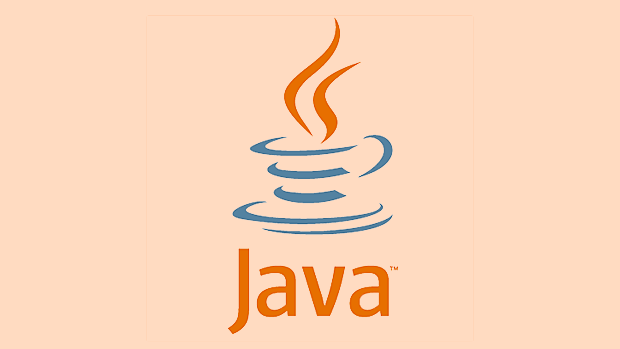How to use a Java profiler like JVisualVM or JProfiler?
The key to using Java Profiler is to understand its functionality and follow the steps. 1. Start the tool and connect to the target application. JVisualVM can directly run and automatically identify local processes. JProfiler needs to be installed and supports remote connections. 2. Analyze CPU and memory. JProfiler provides "Call Tree" and "Hot Spots". JVisualVM samples CPUs through "Sampler", and both can view memory trends and object allocations. 3. Locate thread problems. JVisualVM view state changes through "Threads" tag. JProfiler can detect deadlocks and display resource waiting conditions. 4. Combined with the external environment troubleshooting problems, view GC logs and application logs, and use JVM parameters to assist in analyzing performance bottlenecks.

The key to using Java Profilers such as JVisualVM or JProfiler is to understand their functional positioning and operational processes. Both types of tools can help you analyze application performance issues, but the focus is slightly different: JVisualVM is a free tool built into JDK, suitable for basic monitoring; while JProfiler has more comprehensive functions, suitable for in-depth diagnosis of performance bottlenecks.

1. Start and connect to the target application
No matter which tool it is, the first step is to start and connect to the Java application you want to analyze.
- JVisualVM : The way to open is very simple. Enter the bin directory of the JDK and run
jvisualvm. It will automatically list the local running Java processes and click to select to connect. - JProfiler : It needs to be installed separately. After the installation is completed, select "Remote Integration" through the GUI interface or directly attach to the local process.
Note: If it is an application on a remote server, some configuration is required to connect, such as turning on JMX or adding agent parameters. This process is common in production environments, but it is necessary to ensure that the firewall allows communication to the relevant ports.

2. Analyze CPU and memory usage
Once the connection is successful, you can start to view the application's running status.
-
CPU Analysis :

- In JProfiler, you can select "CPU Views", then select "Call Tree" or "Hot Spots" to quickly find the method that takes up the most CPU time.
- JVisualVM needs to first click the "Sampler" tab, then enable CPU sampling, and then run for a period of time before stopping viewing the results.
-
Memory analysis :
- It mainly depends on the use trend of heap memory, whether there is frequent GC, and whether object creation is reasonable.
- JProfiler provides the "Allocation Hot Spots" function, which can directly see which classes are constantly generating new objects.
- JVisualVM can switch to the "Monitor" tab to view the heap memory usage, or do memory sampling to see the current distribution of surviving objects.
Suggestion: If you find that a certain method is called in a particularly large number, or some classes are instantiated very frequently, it may be the entry point for performance optimization.
3. Locate thread issues and deadlocks
Common threading problems in Java applications, such as deadlock, blocking, insufficient thread pool, etc.
- JVisualVM : Click the "Threads" tab to see the thread state change diagram. If the thread is in BLOCKED state for a long time, you can click "Thread Dump" to view the details.
- JProfiler : There is a dedicated "Threads/Thread Status" view, which can also detect potential deadlocks and show the situation where threads are waiting for resources.
Tips: When you suspect a deadlock, you can directly send a thread dump (thread dump) and then search the keyword "deadlock" in the tool.
4. Cooperate with the external environment to check
Many times, performance problems are not problems with the code itself, but are caused by factors such as slow database, network latency, and unreasonable GC settings.
- View GC situation: You can see the frequency and time-consuming of Full GC in both tools. If Full GC is frequently used, it means that there may be a problem with the memory setting.
- Combined with logs: Although profiler can provide a lot of information, sometimes it is necessary to cooperate with the application log to confirm which section of logic is wrong.
- Use JVM parameter assistance: For example, add
-XX: PrintGCDetailsto output GC logs to help determine whether GC is the bottleneck.
Basically that's it. By mastering these commonly used functions, most common performance problems can be located. Not complicated, but it is easy to ignore details.
The above is the detailed content of How to use a Java profiler like JVisualVM or JProfiler?. For more information, please follow other related articles on the PHP Chinese website!

Hot AI Tools

Undress AI Tool
Undress images for free

Undresser.AI Undress
AI-powered app for creating realistic nude photos

AI Clothes Remover
Online AI tool for removing clothes from photos.

ArtGPT
AI image generator for creative art from text prompts.

Stock Market GPT
AI powered investment research for smarter decisions

Hot Article

Hot Tools

Notepad++7.3.1
Easy-to-use and free code editor

SublimeText3 Chinese version
Chinese version, very easy to use

Zend Studio 13.0.1
Powerful PHP integrated development environment

Dreamweaver CS6
Visual web development tools

SublimeText3 Mac version
God-level code editing software (SublimeText3)
 How to add a JAR file to the classpath in Java?
Sep 21, 2025 am 05:09 AM
How to add a JAR file to the classpath in Java?
Sep 21, 2025 am 05:09 AM
Use the -cp parameter to add the JAR to the classpath, so that the JVM can load its internal classes and resources, such as java-cplibrary.jarcom.example.Main, which supports multiple JARs separated by semicolons or colons, and can also be configured through CLASSPATH environment variables or MANIFEST.MF.
 How to create a file in Java
Sep 21, 2025 am 03:54 AM
How to create a file in Java
Sep 21, 2025 am 03:54 AM
UseFile.createNewFile()tocreateafileonlyifitdoesn’texist,avoidingoverwriting;2.PreferFiles.createFile()fromNIO.2formodern,safefilecreationthatfailsifthefileexists;3.UseFileWriterorPrintWriterwhencreatingandimmediatelywritingcontent,withFileWriterover
 Building Extensible Applications with the Java Service Provider Interface (SPI)
Sep 21, 2025 am 03:50 AM
Building Extensible Applications with the Java Service Provider Interface (SPI)
Sep 21, 2025 am 03:50 AM
JavaSPI is a built-in service discovery mechanism in JDK, and implements interface-oriented dynamic expansion through ServiceLoader. 1. Define the service interface and create a file with the full name of the interface under META-INF/services/, and write the fully qualified name of the implementation class; 2. Use ServiceLoader.load() to load the implementation class, and the JVM will automatically read the configuration and instantiate it; 3. The interface contract should be clarified during design, support priority and conditional loading, and provide default implementation; 4. Application scenarios include multi-payment channel access and plug-in verification; 5. Pay attention to performance, classpath, exception isolation, thread safety and version compatibility; 6. In Java9, provide can be used in combination with module systems.
 A deep understanding of HTTP persistent connections: policies and practices for sending multiple requests on the same socket
Sep 21, 2025 pm 01:51 PM
A deep understanding of HTTP persistent connections: policies and practices for sending multiple requests on the same socket
Sep 21, 2025 pm 01:51 PM
This article explores in-depth the mechanism of sending multiple HTTP requests on the same TCP Socket, namely, HTTP persistent connection (Keep-Alive). The article clarifies the difference between HTTP/1.x and HTTP/2 protocols, emphasizes the importance of server-side support for persistent connections, and how to correctly handle Connection: close response headers. By analyzing common errors and providing best practices, we aim to help developers build efficient and robust HTTP clients.
 How to implement an interface in Java?
Sep 18, 2025 am 05:31 AM
How to implement an interface in Java?
Sep 18, 2025 am 05:31 AM
Use the implements keyword to implement the interface. The class needs to provide specific implementations of all methods in the interface. It supports multiple interfaces and is separated by commas to ensure that the methods are public. The default and static methods after Java 8 do not need to be rewrite.
 Understanding Java Generics and Wildcards
Sep 20, 2025 am 01:58 AM
Understanding Java Generics and Wildcards
Sep 20, 2025 am 01:58 AM
Javagenericsprovidecompile-timetypesafetyandeliminatecastingbyallowingtypeparametersonclasses,interfaces,andmethods;wildcards(?,?extendsType,?superType)handleunknowntypeswithflexibility.1.UseunboundedwildcardwhentypeisirrelevantandonlyreadingasObject
 Java Tutorial: How to Flatten a Nested ArrayList and Fill its Elements into an Array
Sep 18, 2025 am 07:24 AM
Java Tutorial: How to Flatten a Nested ArrayList and Fill its Elements into an Array
Sep 18, 2025 am 07:24 AM
This tutorial details how to efficiently process nested ArrayLists containing other ArrayLists in Java and merge all its internal elements into a single array. The article will provide two core solutions through the flatMap operation of the Java 8 Stream API: first flattening into a list and then filling the array, and directly creating a new array to meet the needs of different scenarios.
 How to read a properties file in Java?
Sep 16, 2025 am 05:01 AM
How to read a properties file in Java?
Sep 16, 2025 am 05:01 AM
Use the Properties class to read Java configuration files easily. 1. Put config.properties into the resource directory, load it through getClassLoader().getResourceAsStream() and call the load() method to read the database configuration. 2. If the file is in an external path, use FileInputStream to load it. 3. Use getProperty(key,defaultValue) to handle missing keys and provide default values to ensure exception handling and input verification.








